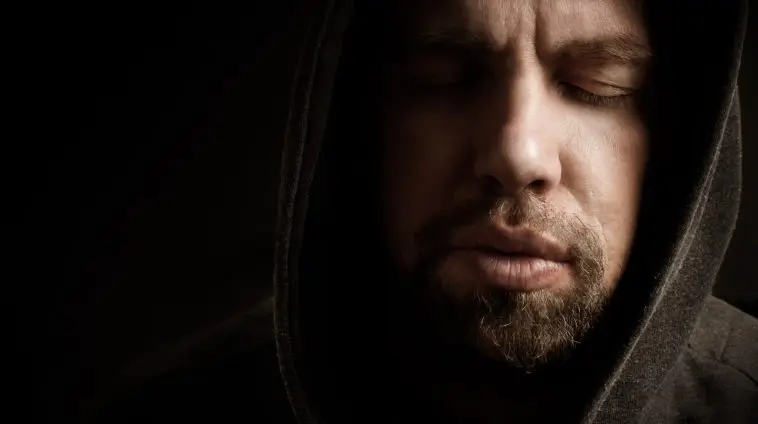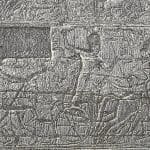[Originally published as Jesus’ Seven Signs in John (6)]
I must work the works of him that sent me, while it is day: the night cometh, when no man can work. (John 9:4)
Why does God allow suffering?
This question usually comes from God-deniers uninterested in finding truth, but more interested in challenging the faith of those who claim to know the truth. Of course, the fundamental answer to the question fails to satisfy the skeptic, that is, that the origin of human suffering, and all other forms of evil, is due to the fall of man (Genesis 3), as the doubter thinks, “There has to be something more to it than that!”
The disciples were no different.
Popular thought at the time said that human suffering, i.e. illness, poverty, calamity, etc., was the result of personal sin, while good health, wealth, good fortune, etc., were signs of God’s favor on a righteous individual.
Jesus went to Jerusalem to celebrate the Feast of Tabernacles (John 7:2), a 21-day celebration that started on Tishri 1 with the Feast of Trumpets, included the Day of Atonement, and culminated in the Feast of Tabernacles. This last festival extended over eight days.
The events of John chapters 7 and 8 include several encounters with the Pharisees. In one memorable event, the Pharisees brought to Jesus a woman caught “in the very act” of adultery so that he could pronounce judgment on her (John 8:4). After this, Jesus made His second I AM statement, “I am the light of the world” (John 8:12). More emphatic than that was his outright proclamation: “Verily, verily, I say unto you, Before Abraham was, I am” (John 8:58). The Pharisees clearly understood his point. “Then took they up stones to cast at him: but Jesus hid himself, and went out of the temple, going through the midst of them, and so passed by” (John 8:59).
The Man Born Blind
Next, “as Jesus passed by, he saw a man which was blind from his birth. And his disciples asked him, saying, Master, who did sin, this man, or his parents, that he was born blind?” (John 9:1–2). In the disciples’ way of thinking, someone must have sinned to cause the total blindness of this man.
In his commentary, Leon Morris states:
There were grave difficulties in seeing how a man could have sinned before his birth. And it is not much easier to think that a man should bear such a terrible punishment for the sin of his parents. So the disciples put the matter to Jesus.1
In his reply, Jesus made it clear that human suffering is not necessarily the result of sin. “Jesus answered, Neither hath this man sinned, nor his parents: but that the works of God should be made manifest in him” (John 9:3).
The account of Job exemplifies that just the opposite can happen (Job 1–2). Job was righteous before God, yet God allowed Satan to bring calamity into his life. In the end, God restored to Job all that he had lost and more.
At the same time, sin does have consequences. Recall the man Jesus healed at the pool of Bethesda. After he was healed, Jesus cautioned him, “Behold, thou art made whole: sin no more, lest a worse thing come unto thee” (John 5:14). Apparently, his malady resulted from sin, but that was not the case with the blind man. “Neither hath this man sinned, nor his parents.” (Only God could know that!) This blindness could not be explained other than the result of a fallen world, and “that the works of God should be made manifest in him.”
The day before, following the incident with the woman caught in adultery, Jesus made his second I AM statement: “I am the light of the world” (John 8:12). Now, he encounters a man who has never experienced “the light of the world,” and he reiterates, “As long as I am in the world, I am the light of the world” (John 9:5). John said as much at the beginning of his Gospel: “In [Jesus] was life; and the life was the light of men. And the light shineth in darkness; and the darkness comprehended it not” (John 1:4-5). Such an idea is rather abstract, but now Jesus would manifest it in a physical way.
When he had thus spoken, he spat on the ground, and made clay of the spittle, and he anointed the eyes of the blind man with the clay. (John 9:6)
Unlike other healings performed by Jesus where His word sufficed to accomplish the miracle, here the Creator physically did something. The act of making clay with his spittle reminds us of his initial creation of man where “the LORD God formed man of the dust of the ground, and breathed into his nostrils the breath of life; and man became a living soul” (Genesis 2:7).
This blind man had not asked for healing, as others had (e.g., Mark 10:46–52), and thus had not yet exhibited any kind of trust in Jesus. This is perhaps why Jesus used a process, rather than merely a word, to heal on this occasion. The man whose eyes had been anointed with the clay still had to exhibit faith by washing in the pool of Siloam before he could see.2
“And said unto him, Go, wash in the pool of Siloam, (which is by interpretation, Sent.) He went his way therefore, and washed, and came seeing” (John 9:7).
Oh, did I mention? “And it was the sabbath day when Jesus made the clay, and opened his eyes” (John 9:14).
The blind Pharisees concerned themselves more with a breach of protocol than they did for the man’s suffering, and they completely missed the creation miracle by “the Lord of the Sabbath” (Mark 2:28; Luke 6:5). Sometimes the answer to suffering is so that Jesus can be glorified.
Footnotes
- Leon Morris, The New International Commentary on the New Testament: The Gospel According to John, Revised, (Wm. B. Eerdmans Publishing Co., Grand Rapids, MI, 1995), 425.
- Henry M. Morris, The Henry Morris Study Bible, (Master Books, Green Forest, AR, 2012), 1591.







